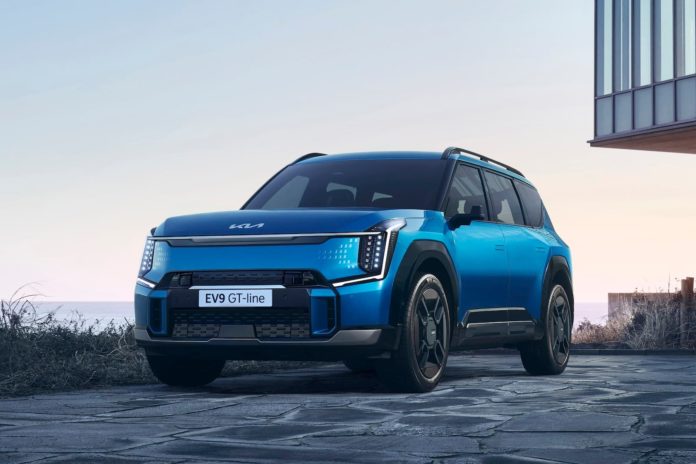More than a year after first introducing a concept version, Kia finally lifted the covers on the production EV9 battery-electric vehicle Tuesday evening. And while it hews closely to the design of the show car, the South Korean carmaker still had some surprises in store.
Among other things, Kia plans to begin offering a fully hands-free drive system, Highway Driving Pilot, on a GT version of the Kia EV9 in 2025. The automaker also plans to use smartphone-style over-the-air technology to let EV9 buyers customize the vehicle, among other things, adding new features that might not have been available at launch, said President and CEO Ho Sung Song during a media backgrounder.
EV9 will be “a source of inspiration for future EV models,” said Song, adding it “Will play a key role in how the Kia brand is defined going forward.”
Stretching out
The all-electric SUV shares the same E-GMP architecture already used for the brand’s smaller EV6 model, with key drivetrain components, including the battery pack, mounted below the load floor.
Here, however, it’s been stretched to roughly the same size as the conventionally powered Kia Telluride. And the unique platform not only permits the addition of a third row but, Kia claims, makes it roomy enough for even tall adults.
Opposites united
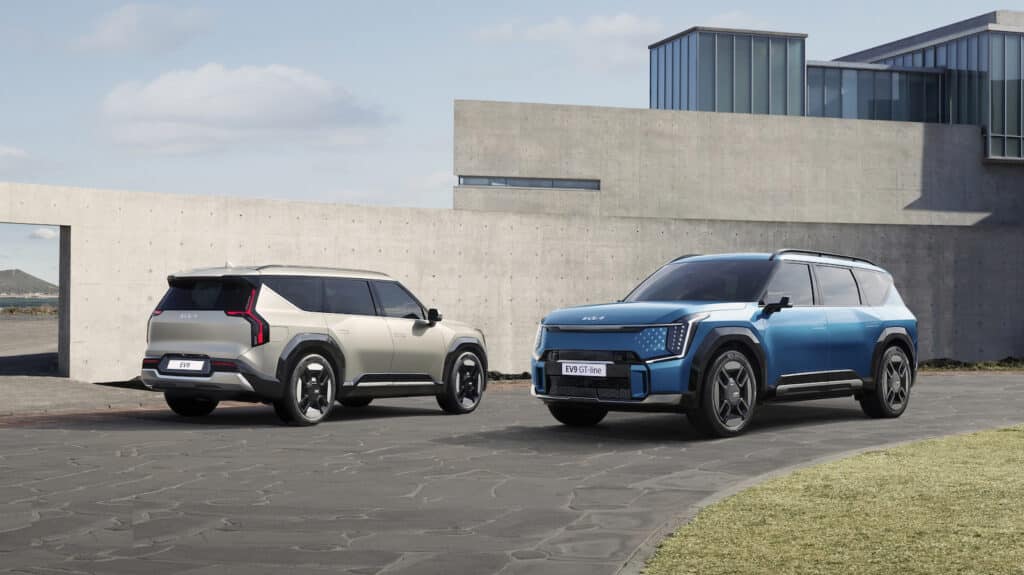
From the outside, the production Kia EV9 doesn’t stray far from the look of the original show car which, explained styling chief Karim Habib, adopts a version of the brand’s “opposites united” design language.
Instead of the trademark Kia “tiger nose” grille, EV9 features what Habib calls a “tiger mask,” which now integrates the headlights and small air intakes to cool the motor drive and battery pack. The show car featured a backlit “star cloud” built into the mask. The production EV also has small lights built in. And owners will be able to choose from a variety of different lighting patterns using the in-car infotainment system.
The “opposites united” theme becomes more readily apparent from a side view. Crisply angular design elements framed the 19-inch, low-drag wheels shown during the media webcast. But the overall body is smoothly sculpted, with only a hand of an accent line. EV9’s roof is long and flat, to maximize passenger headroom, and features the longest integrated spoiler of any Kia model. Unlike most current, all-electric SUVs, the three-row model also integrates a rear wiper.
Focus on sustainability
Inside, EV9’s cabin is designed to emphasize its roominess. There is a twin digital display built into the instrument panel, the infotainment touchscreen pulled forward slightly for easy access.
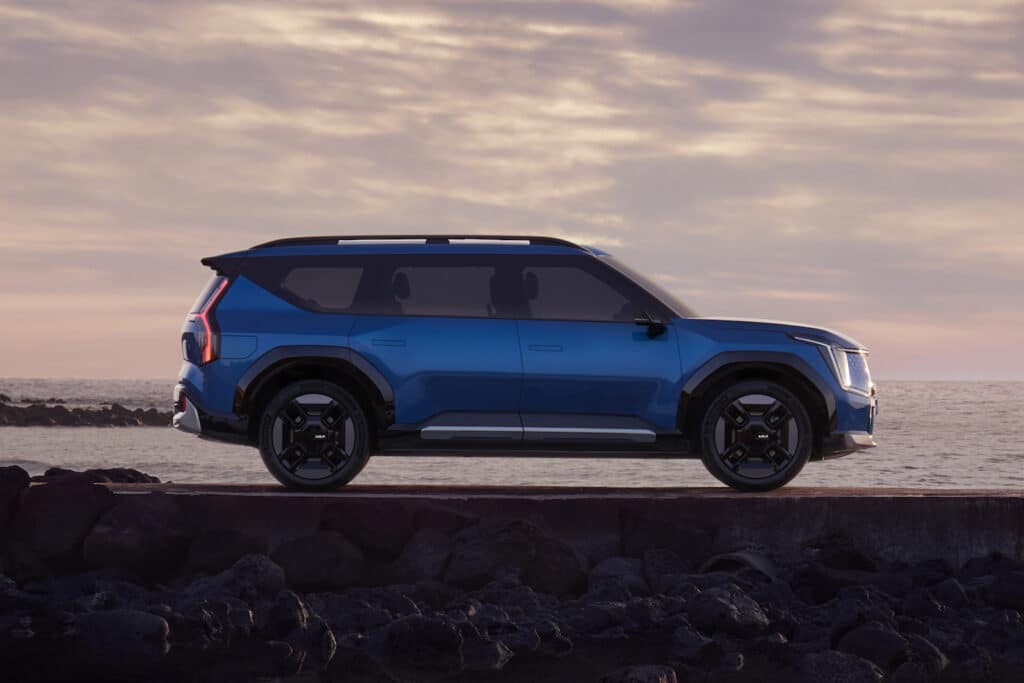
One of the goals was to maximize sustainability, said Marilia Biill, who led development of interior fabrics and finishes. There will be no leather, for one thing. Instead, Kia has come up with a fabric using corn and other sustainable materials to create a similar look and feel. Recycled materials from pop bottles and fishing nets also are used.
“Our real goal was to have sustainability at scale,” said Biill, noting these materials will be used on all EV9 trim levels.
Powertrain options
Kia offered only limited information on the powertrain options that will be offered on EV9. It will be offered in rear-wheel and all-wheel-drive packages. Buyers also will have the option of standard and long-range battery packs. Powered by a single motor, the rear-wheel drive with the standard battery pack gets a 160 kW motor, propelling it from 0 to 62 mph in 8.2 seconds.
The long-range model uses a less powerful 150kW motor that it shares with the all-wheel drive model, which gets two motors. The RWD long-range moves from stop to 62 mph in 9.4 seconds. The all-wheel drive model is fitted with two motors totaling 283 kW of power and races to 60 mph in just 6 seconds.
The long-range pack will have a capacity of 99.8 kilowatt-hours. With the most efficient FWD package, it is expected to yield as much as 541 kilometers, or 336 miles, per charge, Kia officials said. That is based on the global WLTP standard, however, and EPA ratings typically come in as much as 25% lower.
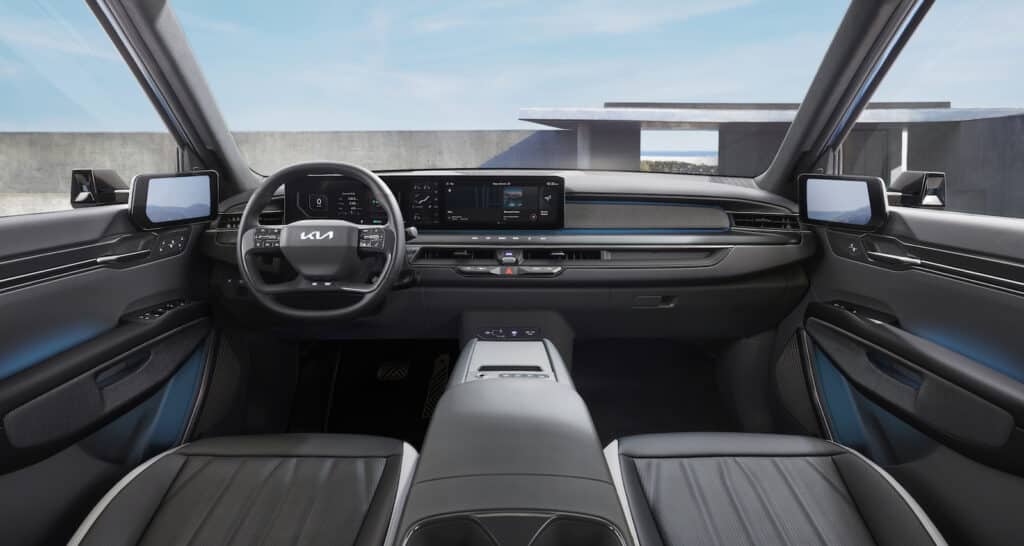
An 800-volt electrical architecture will permit adding as much as 239 km, or about 150 miles, of range in just 15 minutes. Full charging times were not released.
Kia is “currently developing a high-performance version of EV9.” Song added, which will debut in 2025.
Next-level autonomous driving
The GT also will bring to production the new Lidar-based Highway Driving Pilot system. In technical terms, it will permit Level 3 autonomy which would allow a motorist not only to drive hands-free but also watch videos, text or otherwise turn attention away from the road – though they would need to remain at the ready to retake controls, if needed.
Mercedes-Benz recently became the first to offer a Level 3 system, though it operates only at low speeds. Kia did not offer details on when and where the Highway Driving Pilot technology will work.
The semi-autonomous system will be one of the many different digital technologies Kia plans to offer on EV9, said Spencer Cho, head of global business planning.
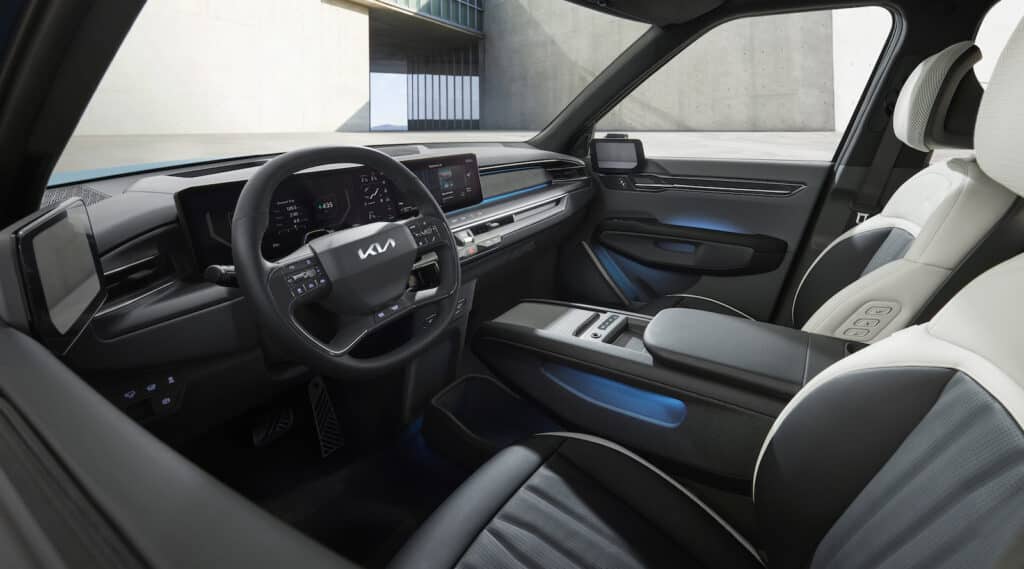
In some instances, owners will be able to add features they might not have chosen at the time of purchase. Other features may be introduced later, he explained, adding that, they will be offered “either as a one-time purchase or on a subscription basis.”
Pricing TBA
Kia officials declined to discuss pricing during Monday’s background briefing, and indicated they are still finalizing the numbers based on what competitors are doing in the fast-growing EV market. But they broadly hinted that EV9 will be the brand’s most expensive model.
They also suggested that they are not targeting a large audience with the all-electric SUV.
“We want early adopters, we want people who are open to new solutions, to new ideas,” said Habib.
The automaker plans to begin taking orders for the EV9 in the home South Korean market during the second quarter of this year. It will follow in Europe, North and South America and other markets during the second half of 2023.

